- This year marks the 34th anniversary of the prestigious Goldman Environmental Prize, which honors one grassroots activist from each of the six inhabited continents.
- The 2023 prize winners are Alessandra Korap Munduruku from Brazil, Chilekwa Mumba from Zambia, Delima Silalahi from Indonesia, Diane Wilson from the U.S., Tero Mustonen from Finland, and Zafer Kızılkaya from Turkey.
Six grassroots environmental activists received the Goldman Environmental Prize on April 24. Known as the “Green Nobel Prize,” the Goldman Prize honors environmental activists from the six continental regions. The prize was founded in 1989 by U.S. philanthropists Rhoda and Richard Goldman.
This year’s winners include a conservationist who created a new marine protected area along the coast of Turkey; a fisherman whose cross-cultural model for restoration is bringing back Finland’s peatlands; a fourth-generation fisherwoman who held a plastic company accountable for pollution on the U.S. Gulf Coast; an Indigenous organizer who launched an international campaign and fended off a mining company from her people’s land in the Amazon; a leader who helped six Indigenous communities gain legal guardianship of their land in Sumatra; and a Gambian organizer whose legal actions set a precedent to hold U.K. mining companies responsible for environmental damage caused by their subsidiaries in other countries.
“Now that the world has awakened to acute environmental crises like climate change, fossil fuel extraction, and pollution of our air and water, we are much more aware of our connections to each other and to all life on the planet … our fates, are all intertwined.” said John Goldman, president of the Goldman Environmental Foundation.
The winners will be honored in a ceremony at the San Francisco Opera House on April 24, at 5:30 p.m. PDT, hosted by Outdoor Afro founder Rue Mapp, with musical guest Aloe Blacc. The program will be livestreamed on the Goldman Prize’s YouTube channel.
Here are the winners of the 2023 Goldman Environmental Prize:
Alessandra Korap Munduruku, Brazil
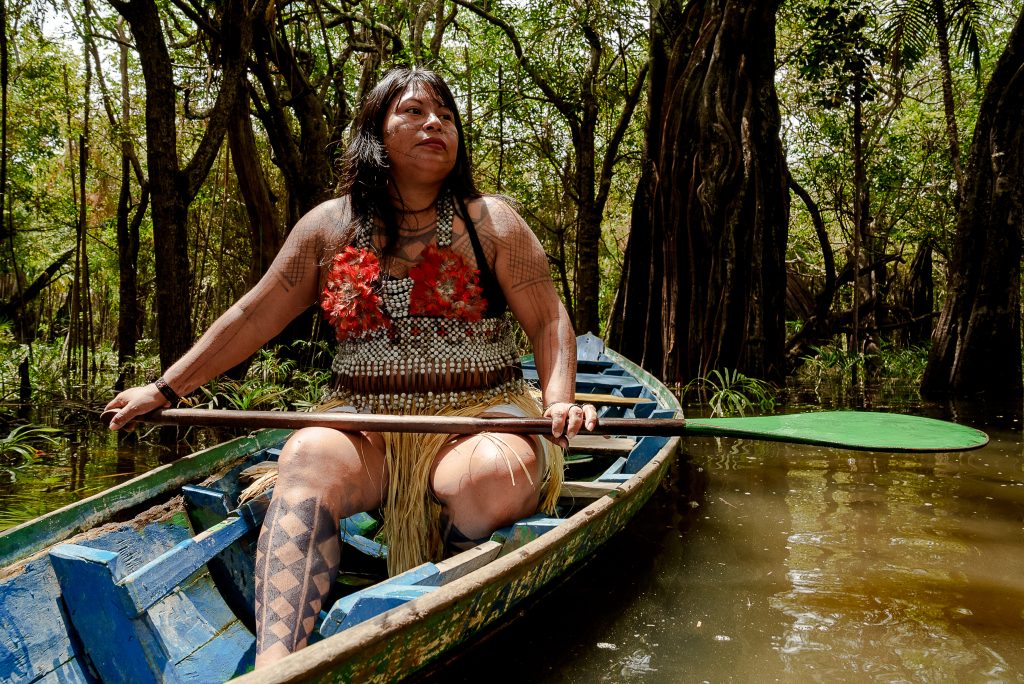
Alessandra Korap Munduruku, a leader of the Munduruku Indigenous people in the Amazon, successfully led a campaign against mining giant Anglo American’s attempts to mine on her community’s land.
The Brazilian government does not officially acknowledge the region, the Sawré Muybu Indigenous Territory in northern Brazil, despite it being home to several Munduruku communities, leaving it vulnerable to mining, hydroelectric projects, logging, and land seizures for cattle ranching. Illegal mining, which surged in 2020, has led to contamination of the local Tapajós River due to mercury, killing off local fish populations and poisoning residents.
Alessandra’s campaign against Anglo American involved raising the alarm at community meetings, developing a campaign strategy, fundraising efforts, and collaborating with allies such as the Articulation of Indigenous Peoples of Brazil (APIB) and the NGO Amazon Watch to craft an open letter to Anglo American. She also partnered with Amazon Watch, Greenpeace and other Indigenous leaders to spread the message at international conferences and forums.
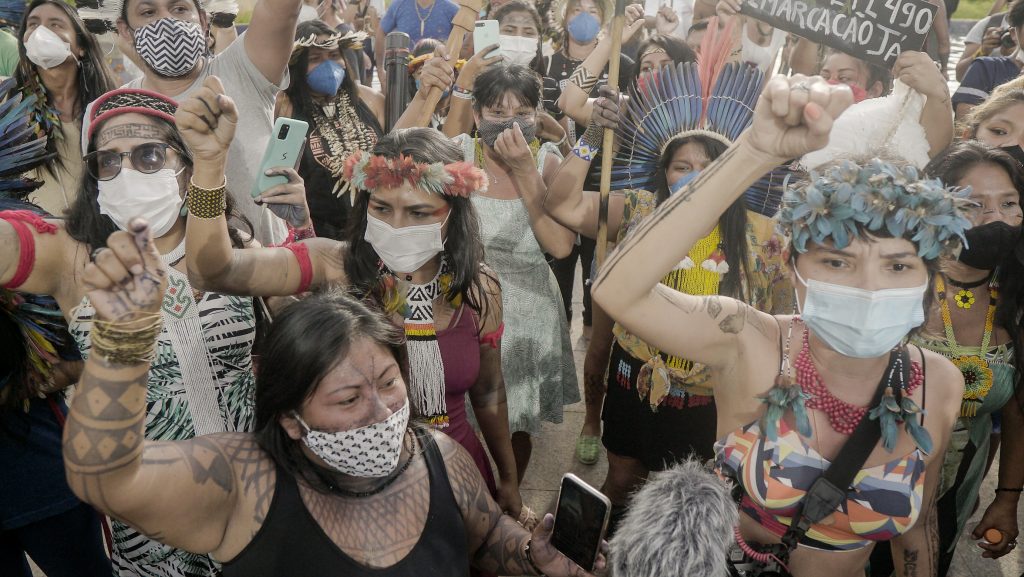
In May 2021, Anglo American agreed to withdraw its 27 approved research applications to mine inside Indigenous territories, including the Sawré Muybu Indigenous Territory, citing the concerns of Indigenous communities and organizations. The victory marked a significant change in Brazil’s private sector accountability for mining. In 2022, a survey by the Brazilian Mining Association found that none of its 130 member companies had current mining applications in Indigenous territories for the first time in decades.
At an Amazon Watch event in San Francisco ahead of the Goldman Prize ceremony, Alessandra said that despite this victory against Anglo American, she has difficulty sleeping knowing the threats her people still face and that she will not rest until the Brazilian government officially recognizes their land. She stands alongside other Amazonian Indigenous people in a movement calling for 100% demarcation (legal recognition) of all Indigenous territories in Brazil to protect the imperiled Amazon Rainforest to the benefit of all life on Earth.
Chilekwa Mumba, Zambia

Chilekwa Mumba, an organizer who runs an orphanage with his wife, won a six-year fight against Vedanta Resources, a mining company that polluted the Kafue River in Zambia.
Vedanta owns Konkola Copper Mines, one of the largest mining operations in the country and the country’s largest employer. After the company took over the mines in 2004, the Kafue River became contaminated with toxic waste. An internal company letter in 2011 from a medical doctor revealed that toxic spills and discharges into the Kafue River had contaminated the local water supply, including the water table, making it unsafe for human consumption. Because local residents relied on this water for drinking, bathing, and crop and livestock irrigation, the result was reduced crop yields, sickened animals, and various health problems for villagers, including blood in urine, rashes and nosebleeds.
Mumba grew up in a village near the river. When he witnessed the pollution, he became determined to hold the company responsible. He sought the help of a U.K.-based law firm, Leigh Day, to take Vedanta to court. Mumba spent years gathering evidence and convincing villagers to join the lawsuit. He took water samples and encouraged witnesses to speak out against the company, even organizing blood tests for those affected by the pollution.
In 2019, the U.K. Supreme Court ruled that Vedanta, as the U.K.-incorporated parent company of KCM, could be held responsible for environmental damage caused by the mine and was liable for damages. The ruling set a precedent that a parent company could be held accountable for the actions of its subsidiary. In 2021, Vedanta reached a settlement with almost 2,000 villagers from four villages near KCM, who had suffered from pollution caused by the mine, providing them with undisclosed compensation.
The lawsuit challenged long-standing corporate impunity and established a precedent for holding U.K. companies responsible for the actions of their foreign subsidiaries. The ruling has already been used to hold Shell Global accountable for its pollution in Nigeria.
Delima Silalahi, Indonesia

Delima Silalahi, a community organizer and NGO leader, spearheaded an effort for six Indigenous communities to gain legal guardianship of 7,213 hectares (17,824 acres) of land in the tropical forests of Indonesia’s North Sumatra province.
The North Sumatran forests are biodiversity hotspots and home to many critically endangered species like the Sumatran tiger, orangutan and elephant. These forests also store vast amounts of carbon. However, Indonesia remains one of the world’s largest emitters of greenhouse gases, primarily due to deforestation and peatland burning to establish industrial plantations.
Silalahi and her team at the NGO Community Initiative Study and Development Group (KSPPM) rallied local communities to take legal claim over their forests. Much of this land had been previously cleared and transformed into a monoculture eucalyptus plantation by Toba Pulp Lestari (TPL), a pulp and paper company. TPL was able to take over community-managed forests due to the absence of official recognition of these territories.
In response, Silalahi and her team traveled among villages, working with six communities to create maps of their traditional territories and educating people about the laws that support the recognition of Indigenous peoples’ rights and land claims. She also organized protests against TPL in its operating districts, drawing massive media attention.

Silalahi also ensured that women’s voices were heard despite exclusion from most official decision-making in Indigenous Tano Batak communities. She faced many challenges as a female leader in Indonesia, including criticism for being away from her family for weeks at a time. However, she continued to incorporate gender education as a central organizing tool to support the recognition of Indigenous peoples’ rights.
In February 2022, the Indonesian government granted legal guardianship of their customary forests to the six Tano Batak communities. With the support of the KSPPM, these communities are already replanting these lands with native tree species, including Styrax benzoin gum trees, which have been used as a source for incense, perfume and medicine for centuries and can serve as an important source of income for local communities.
Diane Wilson, U.S.

Diane Wilson, a fourth-generation fisherwoman and retired shrimper, achieved a significant legal victory against Formosa Plastics, a company responsible for unlawfully dumping toxic plastic waste into the Gulf Coast of Texas and causing harm to marine habitat and wildlife.
Formosa Plastics’ Point Comfort plant, which began operating in 1983, produces more than a trillion nurdles daily. Nurdles, the small plastic pellets that form the building blocks of all plastic items — from straws to plastic bags to other plastic products — have inundated waterways in the region, harming marine habitats and wildlife that can starve from eating the grain-sized nurdles.
The Lavaca Bay area once had a prosperous oyster and shrimp fishery. After witnessing the local fisheries’ collapse, Wilson committed herself to restoring the devastated marine ecosystem. After receiving information from a former Formosa employee-turned-whistleblower about plastic pollution from the Point Comfort plant, she began investigating the wastewater, identifying discharge points, and organizing volunteer teams to take daily sampling on foot and by kayak. In four years, her team gathered more than 40 million plastic nurdles.

When the Texas Commission on Environmental Quality failed to enforce regulations, she initiated a civil lawsuit against Formosa. She brought in expert witnesses, including a stormwater expert, a marine biologist, a former state environmental official, and former workers from the plant. She also personally presented 2,400 contaminated samples in court.
In December 2019, a federal judge ruled that Formosa was a “serial offender” with “extensive, historical, and repetitive” violations of the Clean Water Act.
The settlement reached in the lawsuit was valued at $50 million, the most substantial award in the history of the Clean Water Act’s citizen suits against an industrial polluter. As part of the agreement, Formosa Plastics consented to reaching “zero-discharge” of plastic waste from its Point Comfort factory, paying penalties, and funding remediation of impacted local ecosystems.
The case marked a significant victory against industrial polluters and raised awareness of the harm caused by plastic pollution in the oceans.
Tero Mustonen, Finland

Tero Mustonen, a Finnish scholar, fisherman and president of the NGO Snowchange Cooperative, brought together Sámi Indigenous knowledge holders, Western science, and community members to preserve culture and protect and restore massive areas of carbon-capturing peatlands.
About 30% of the country’s surface is composed of peatland. Peat bogs have a layer of decomposed plant material that traps water and carbon dioxide due to the lack of oxygen. As a result, peatlands store a significant amount of carbon, making them crucial for regulating the Earth’s climate. However, peatlands grow slowly, about 1 meter (3 feet) every 1,000 years.
In Finland, peat is burned to create energy, releasing these hard-won carbon stores into the atmosphere. Due to peat burning, Finland generates 23.8 million tons of carbon dioxide annually, making it the largest peat burner in the EU. And despite its goal of achieving carbon neutrality by 2035, the country only intends to reduce peat use by half during that time frame.
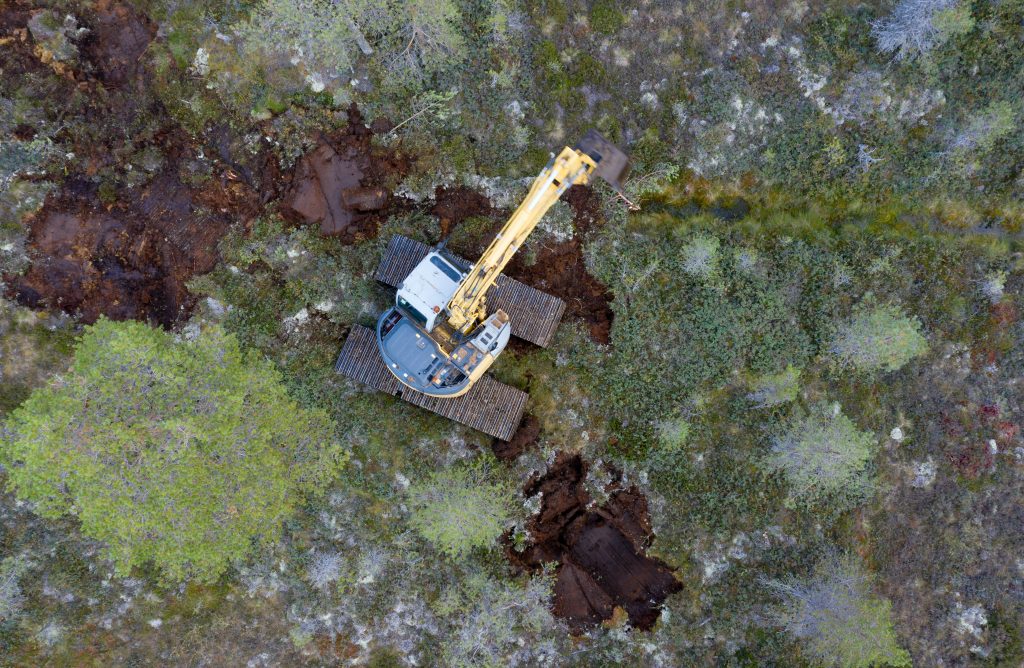
After witnessing the destruction and fish kills brought on by the state-sponsored destruction of peatlands, Mustonen launched a rewilding campaign in 2018. The Snowchange Cooperative bought industrial forestry and peatland sites and restored them using traditional knowledge and modern scientific data. Using bulldozers, diggers, small earthen dams and even hand tools, the teams restored the natural flow of water across the land.
The program has restored more than 34,800 hectares (86,000 acres) of wetlands across Finland, now home to hundreds of migratory and rare bird species. Mustonen’s peatland restoration program brings Finland closer to its carbon-neutral goals and protects its biodiversity. With his connections to science, nature, and traditional Finnish culture, Mustonen has developed a “cross-cultural model” for addressing ecosystem restoration, rewilding, and climate change.
Zafer Kızılkaya, Turkey

Zafer Kızılkaya, a civil engineer turned marine conservationist, established Turkey’s first community-managed marine protected area (MPA) in Gökova Bay.
Kızılkaya founded the Mediterranean Conservation Society in 2012 to address the degradation of the bay and worked with fishing cooperatives to revive the marine ecosystem. Then, building on the success of this first MPA, Kızılkaya and his team embarked on a challenging and bureaucratic campaign in 2017 to expand the MPA network further along the Turkish coastline.
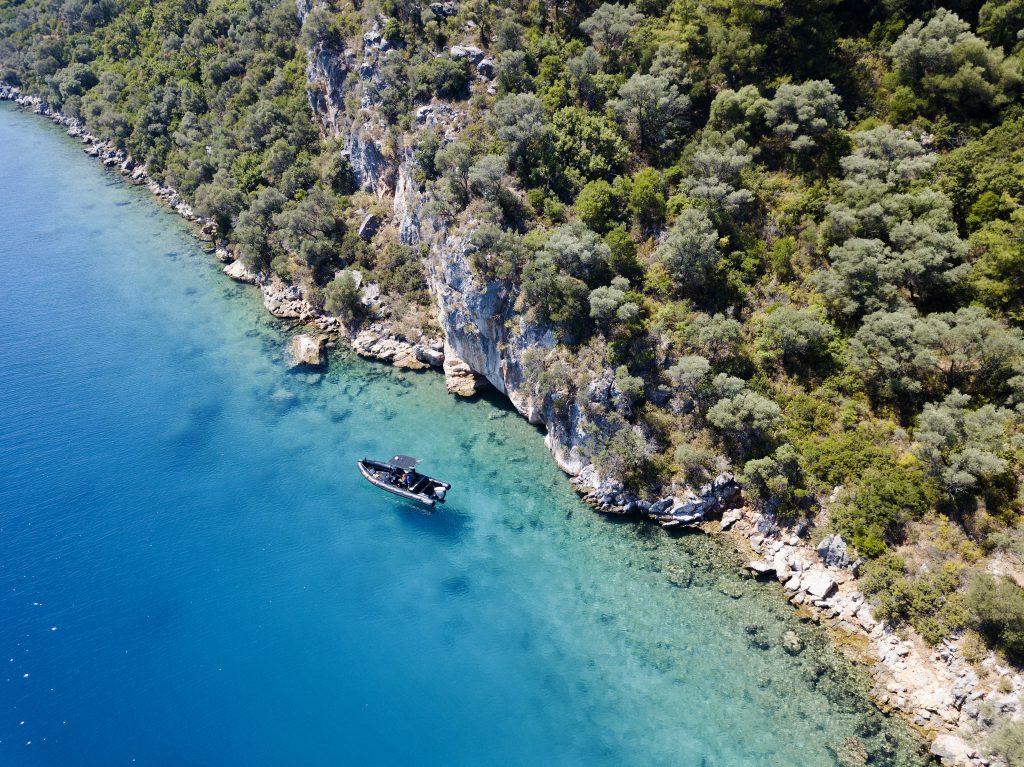
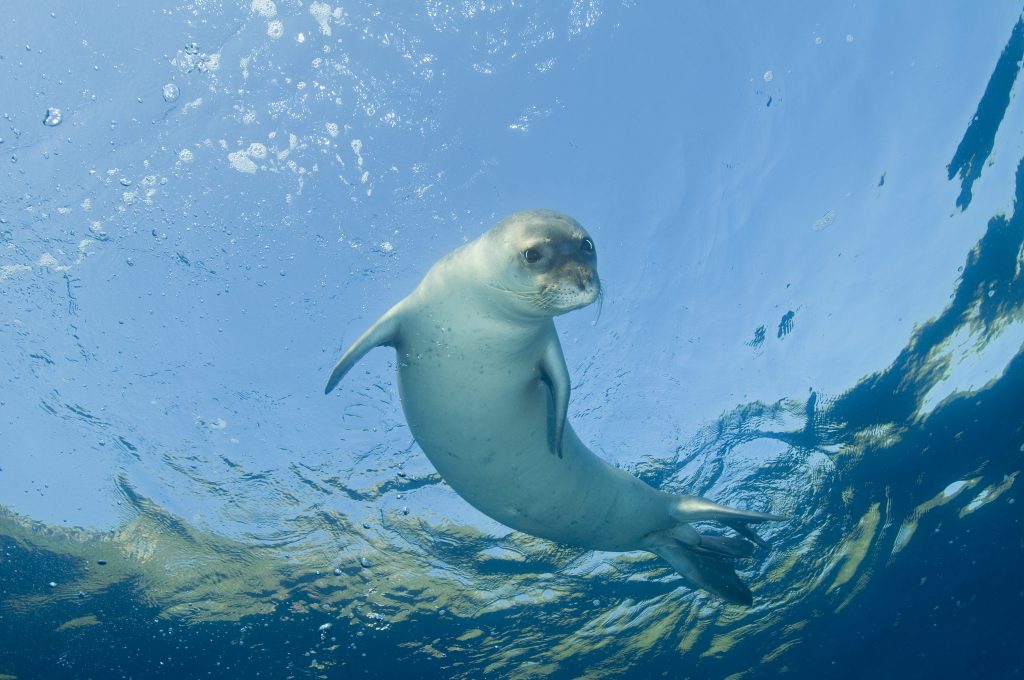
Kızılkaya built relationships with government ministers and fishing cooperatives, inviting them to Gökova Bay to see how the marine life was rebounding. He implemented innovative measures such as training local fishers to be marine rangers and combat illegal fishing.
In August 2020, the government announced the expansion of the MPA network along nearly 499 kilometers (310 miles) of Turkey’s coastline. This MPA includes 350 square kilometers (135 square miles) where trawling and the use of purse seines (large walls of netting that scoop up fish) are prohibited, as well as an additional 70 km2 (27 mi2) where no fishing is allowed.
Kızılkaya’s grassroots work has protected marine habitats and species and boosted the fishing communities of the Turquoise Coast.
Read more about this years winners and how to support their causes here.
Banner image: The 2023 winners, courtesy of the Goldman Environmental Prize.
Related audio from Mongabay’s podcast: Hear winner Tero Mustonen describe his ecosystem restoration work that’s based on Sámi Indigenous knowledge, listen here:
Further coverage about winner Alessandra Munduruku:
‘I’ll keep fighting’: Indigenous activist and Goldman winner Alessandra Munduruku
FEEDBACK: Use this form to send a message to the author of this post. If you want to post a public comment, you can do that at the bottom of the page.
